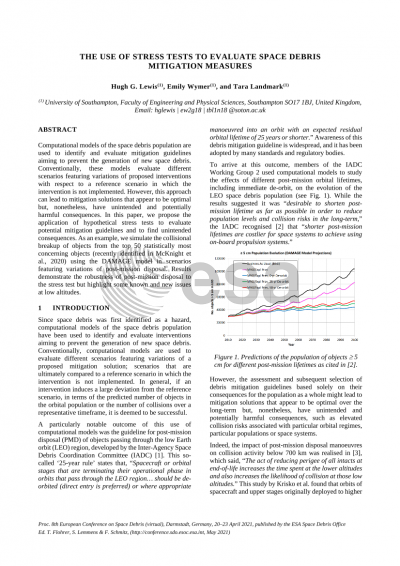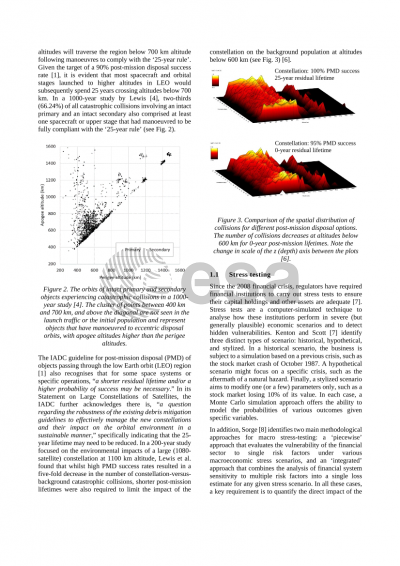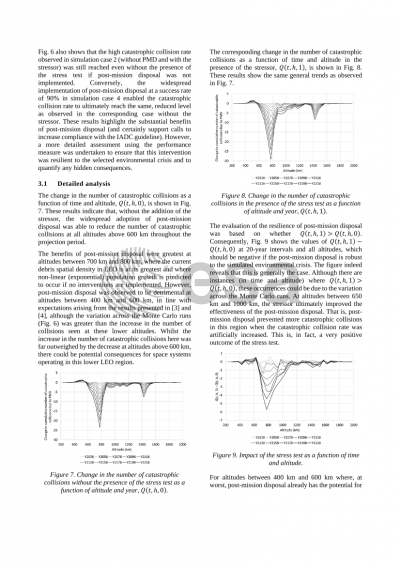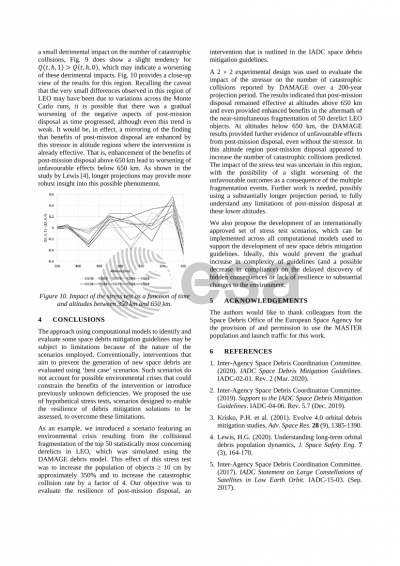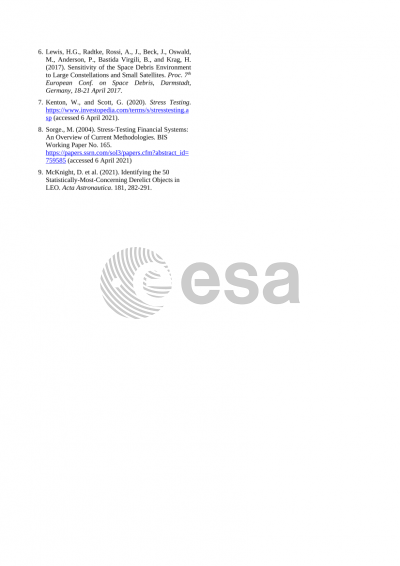Document details

Abstract
Since space debris was first identified as a hazard, computational models of the space debris population have been used to identify and evaluate mitigation measures aiming to prevent the generation of new space debris. A particularly notable outcome of this activity was the so-called “25-year rule”, which seeks to limit the time spent by spacecraft and upper stages within the Low Earth Orbit Protected Region. Awareness of this mitigation measure is widespread, and it has been adopted by many standards and regulatory bodies. Conventionally, computational models are used to evaluate different scenarios featuring variations of a proposed mitigation measure; scenarios that are ultimately compared to a reference scenario in which the measure is not implemented. In general, if a measure induces a large deviation from the reference scenario, in terms of the predicted number of objects in the orbital population or the number of collisions over a representative timeframe, the measure is deemed to be successful. However, this approach can lead to mitigation solutions that appear to be optimal but, nonetheless, have unintended and potentially harmful consequences, such as elevated collision risks associated with particular orbital regimes or particular space activities. In this paper, we propose the application of “stress tests” to evaluate potential mitigation measures and to find unintended consequences. As an example, we simulate the collisional breakup of objects from the top 50 most risky objects (recently identified in McKnight et al., 2020) using the DAMAGE model, adding fragments from these events to a reference scenario and to scenarios featuring variations of post-mission disposal and other mitigation measures.
Preview
